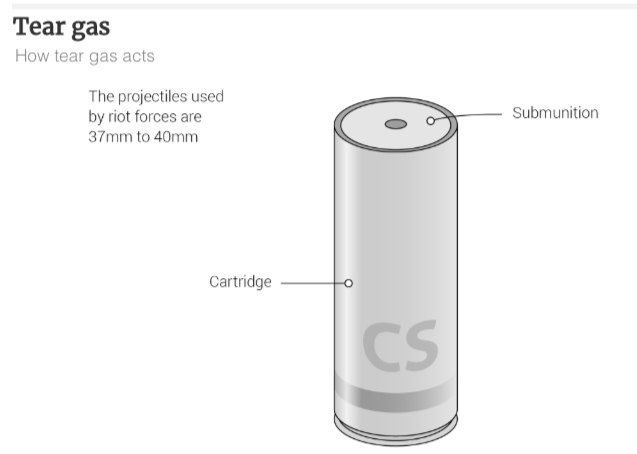China aumentará produção de gás lacrimogêneo em meio a crescentes protestos em Hong Kong
27 de agosto de 2019
Espera-se que a China amplie sua capacidade de produção de gás lacrimogêneo e outras armas de controle de multidões, segundo o South China Morning Post.
O relatório diz que a China não fornece atualmente a Força Policial de Hong Kong, mas com a agitação civil fora de controle na região, espera-se que a demanda por gás lacrimogêneo salte a curto prazo, o que poderia deixar os produtores chineses de gás em excelente posição .
Mainland tear gas production began in the 1990s, and over the last decade, riot police have used tear gas in high-profile demonstrations, including protests in Wukan village in the southern province of Guangdong in 2011 and 2016.
Made-in-China tear gas has been exported to several countries abroad.
Thailand’s political crisis in 2012 forced the Royal Thai Police to fire Chinese tear gas canisters at protestors. The gas was even used during the Arab spring and at anti-government demonstrations in Sudan and Venezuela.
Analysts at Research & Markets believe the Chinese tear gas industry is likely to grow 7.4% between this year and 2025, generating around $811 million in market value over the six years.
The entire industry could be valued at $10 billion by 2022, according to a report by Allied Market Research, with China expected to be one of the hottest markets “due to strong economic growth, increased military expenditure, rapid industrial development, and growing civil unrest situations.”
Jinjian Police Equipment Manufacturing Company manufactured 20,000 tear gas hand grenades last year, according to a salesman named Han.
“Most clients are from home, but there were also foreign buyers and trading companies that eventually resold the goods abroad,” he said. “As far as I know, some of our grenades went to Algeria.”
Omega Research Foundation in 2014 said Chinese firms making crowd control weapons had quadrupled in the past decade to 134, with 48 offering products for export.
As part of a 2016 Chinese government acquisition process to supply the ministry with tear gas, 16 companies were chosen across the country to fulfill the orders. By 2018, 50 companies were bidding on contracts to provide the government with tear gas.
In the last several months, the increasing use of tear gas, rubber bullets, flashbangs, bean bag rounds, and pepper spray by the Hong Kong Police Force against anti-government protests have put Chinese firms into an excellent position to capitalize on the turmoil.
This is how Hong Kong protesters extinguish tear gas rounds fired by police pic.twitter.com/Qo8XIzGM0f— Bloomberg TicToc (@tictoc) August 21, 2019
Hong Kong police have so far fired 1,800 rounds of tear gas this year, which it’s long-term supplier, Britain, pulled out of contracts in June over “concerns about human rights abuses.”
It’s "hugely problematic" that Hong Kong police fired tear gas from above crowds, an expert said, as seen here. “If it hits someone in the head, you could kill them," said Jim Bueermann, former president of the Police Foundation in Washington. “I have never seen that before." pic.twitter.com/sLsUnRO9RJ— The New York Times (@nytimes) August 18, 2019
Tear gas is banned from the modern battlefield but is permitted by the Chemical Weapons Convention for domestic crowd control, which suggests that China could soon be exporting the gas to Hong Kong.
A saleswoman at state-owned Henan Ordnance Special Equipment Company, one of the 50 contracted tear gas suppliers, said there are some restrictions on exports.
“Foreign buyers have to provide a whole set of documents, like the end-users’ information and licenses, as well as relevant approvals from the Chinese police,” she said.
With China’s added capacity to make more tear gas coming online in the near term, it could soon supply Hong Kong as the political turmoil deepens.


Nenhum comentário:
Postar um comentário